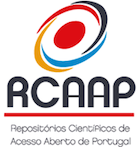Criptococcal meningitis in HIV infected patients – a retrospective study of S.Marcos Hospital experience between 1998 and 2004
Keywords:
meningitis, Cryptococcus, HIV infection, intracranial hypertensionAbstract
Cryptococcus is a fungal infection caused by Cryptococcus
neoformans. This article retrospectively describes the number of
HIV patients at S. Marcos Hospital diagnosed with Criptococcal
meningitis, between January 1998 and July 2004. During this 66
month period 18 cases have been identified. In our series there
was no correlation between the stage of the HIV infection and
the clinical manifestations at the time of admission. Given that no
association was found between the initial clinical manifestations
and opening pressure in the initial lumbar puncture, the former
can not be taken as a trustworthy indicator of the need to lighten
the intracranial pressure. Our work re-emphasises the importance
of evaluating the opening pressure, as a means to diagnose intracranial hypertension. The drainage of liquor, eventually backed by
appropriate neurosurgical techniques, is an adequate alternative
method to alleviate intracranial hypertension, when strong evidence supporting the use of medication for that purpose is scarce.
The reduction of mortality and morbidity relies on an aggressive
approach, which combines the use of anti-fungal therapy with
external drainage, or even peritoneal shunting.
Downloads
References
Harrison M, McArthur J. Cerebral Infections in AIDS:Cryptococcal Meningitis, Infect Med 1998;15(6): 396-409.
Graybill J, Sobel J, Saag M et al. Diagnosis and Management of IncreasedIntracranial Pressure in Patients with AIDS and Cryptococcal Meningitis, Clinical Infectious Diseases 2000;30:47-54.
Kimberly J. Gambarin MD,Hamill MD. Management of Increased Intracranial Pressure in Cryptococcal Meningitis, Current Infectious Disease Reports 2002;4:332-338.
Bach M,Tally P,Godofsky E. Use of Cerebrospinal Fluid Shunts in Patients Having Acquired Immunodeficiency Syndrome with Cryptococcal Meningitis and Uncontrollable Intracranial Hypertension, Neurosurgery 1997; 41(6):1280-1283.
Chuck SL,Sande MA. Infections with Cryptococcus neoformans in the acquiredimmunodeficiency syndrome NEJM 1989; 321:794-799.
Saag M,Graybill R,Larsen R et al. Practice Guidelines for the mangement of Cryptococcal Disease,Clinical Infectious Diseases 2000;30:710-718.
Brouwer A,Rajanuwong A,Chierakul W et al. Combination antifungal therapies for HIV-associated cryptococcal meningitis: a randomised trial, Lancet 2004;363:1764-1767.
Sun H,Hung C,Chang S. Management of Cryptococcal Meningitis with Extremely High Intracranial Pressure in HIV-Infected Patients, Clinical Infectious Diseases 2004;38:1790-1792.
Shih C,Chen Y,Chang S et al. Cryptococcal meningitis in non-HIV-infected patients, QJMed 2000;93:245-251.
Dismukes WE,Cloud G,Gallis HA et al. Treatment of cryptococcal meningitis with combination amphotericin B and flucytosine for four as compared with six weeks, NEJM 1987; 317:334-341.
Aberg J,Powderly W.Cryptococcosis and HIV, HIVInSite Knowledge Base Chapter October 2002, www. Hivinsite.ucsf.edu/InSite acedido em
/8/2003
Denning DW, Armstrong RW,Lewis BH et al. Elevated cerebrospinal fluid pressures in patients with cryptococcal meningitis and acquired immunodeficiency syndrome. Am J Med 1991; 91(3): 267-272.
Liliang P,Liang C,Chang, W.et al.Use of Ventriculoperitoneal Shunts to Treat Uncontrollable Intracranial Hypertension in Patients Who Have Cryptococcal Meningitis without Hydrocephalus, Clinical Infectious Diseases 2002; 34e64-68.
Antinori S,Ridolfo A,Gianelli E et al.The role of lumbar puncture in the management of elevated intracranial pressure in patients with AIDS-associated cryptococcal meningitis, Clinical Infectious Diseases 2000;31:1309-1310.
Newton P,Thai LH,Tip N et al. A randomized, double-blind,placebo-controlled trial of acetazolamide for the treatment of elevated intracranial pressure in cryptococcal meningitis, Clinical Infectious Diseases 2002;35:769-772.
Woodworth GF, McGirt MJ,Williams MA et al. The use of ventriculoperitoneal shunts for uncontrollable intracranial hypertension without ventriculomegaly secondary to HIV-associated cryptococcal meningitis, SurgNeurol. 2005; 63(6): 529-531.
Park M.,Hospenthal D,Bennett J. Treatment of Hydrocephalus Secondary to Cryptococcal Meningitis by Use of Shunting, Clinical Infectious Diseases 1999; 28:629-633.
Chumas P,Kulkarni A,Drake J et al. Lumboperitoneal Shunting: a retrospective study in the pediatric population, Neurosurgery 1993; 32 (3): 376.
Tan CT. Intracranial hypertension causing visual failure in Cryptococcus meningitis, J Neurol Neurosurg Psichiatry 1998;51:944-946
Additional Files
Published
How to Cite
Issue
Section
License

This work is licensed under a Creative Commons Attribution 4.0 International License.
Copyright (c) 2023 Medicina Interna





